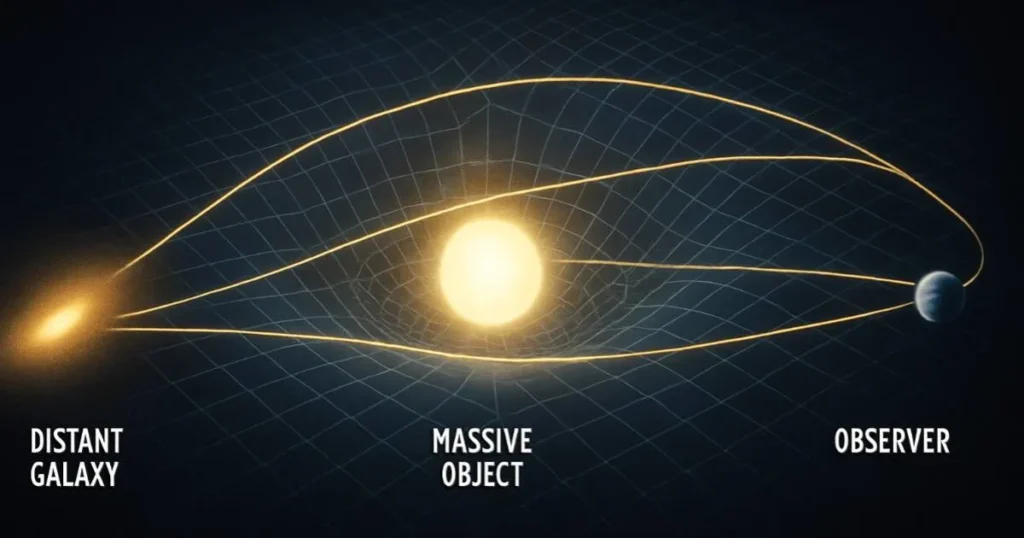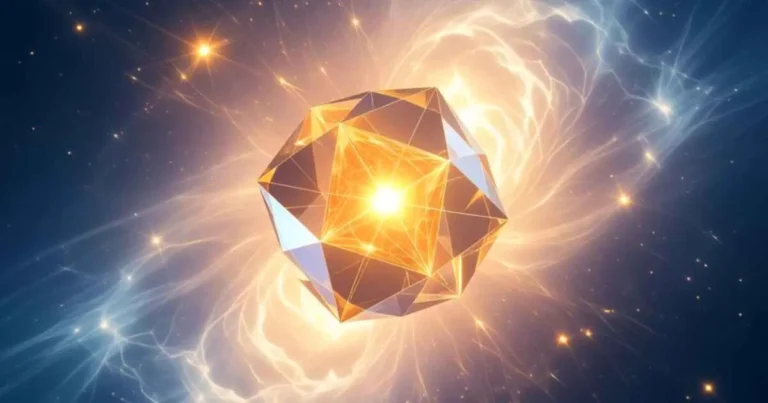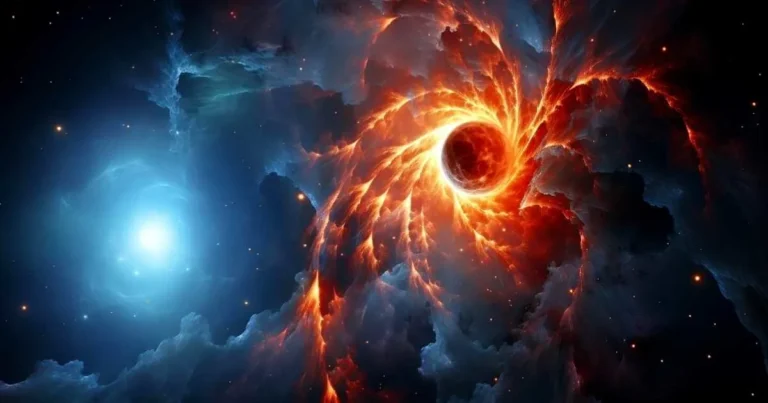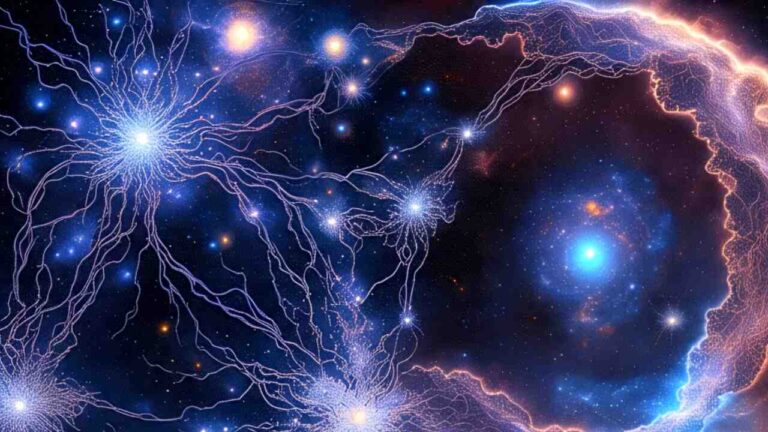Gravitational Lensing: The Astonishing Cosmic Magnifier

Tags:
- Gravitational Lensing
Ever stood in front of a funhouse mirror and had your reflection distorted in bizarre, uncontrollable ways? Scale that up by cosmic orders of magnitude — galaxies and black holes warping the fabric of space itself with optical illusions. That’s gravitational lensing, and it’s not merely a handy trick of the universe — it’s one of the most general methods of modern astrophysics.
Let’s take it apart, layer by layer- jargon walls don’t exist. Naked, brain-busting, space-busting reality.
What Is Gravitational Lensing?
Gravitational lensing happens when a massive object—like a galaxy or cluster—bends light from something far behind it, acting like a natural magnifying glass. Einstein’s general relativity predicted this nearly a century ago: mass warps spacetime, and light follows that curve. It’s like placing an unseen glass lens in the night sky—only the “lens” is gravity itself.
Why Gravitational Lensing Matters
Gravitational lensing is more than just cosmic curiosity. It reveals the hidden—dark matter, the universe’s earliest galaxies, and even helps us test laws of gravity. In the past year alone, ESA’s Euclid mission cataloged 500+ strong lensing events, delivering an avalanche of data that’s rewriting our map of dark matter and cosmic structure.
It’s like gravity handing us a magnifying glass for the invisible.
Revealing the Invisible: Dark Matter and Cosmic Structures
When lenses distort background galaxies—even into arcs or rings—they expose where dark matter hides. The Euclid telescope’s recent data revealed over 500 strong gravitational lensing events, helping astronomers map clumps of dark matter that were otherwise invisible.
Peering Into the Early Universe
Gravitational lensing magnifies distant galaxies and quasars, allowing us to observe cosmic structures that existed long ago—even from the first billion years after the Big Bang.
How Gravitational Lensing Works: A Cosmic Analogy
Let’s think of space as a giant invisible river flowing smoothly in every direction. Now, imagine a beam of light like a tiny paper boat floating along this river. Normally, it would just drift straight—no curves, no turns. But here’s the twist.
Now imagine that in this invisible river, a massive object like a galaxy or a black hole is sitting in the middle. It’s not a rock—it doesn’t block the river. Instead, it’s more like a whirlpool. It doesn’t stop the boat, but it pulls and bends the water around it.
When our paper boat (light) passes nearby, it doesn’t crash. It curves around the whirlpool because the flow of the river (spacetime) is distorted.
That’s gravitational lensing: light from a faraway object, like a galaxy or quasar, bends as it moves around something massive between us and it. The result? That light takes a different path—and sometimes, it even reaches us in multiple copies, like seeing the same boat coming from different directions.
Types of Gravitational Lensing
Strong Gravitational Lensing
When alignment is nearly perfect, we see dramatic effects like Einstein rings—full circles of light—or multiple images of a single galaxy/quasar. These usually happen when a massive galaxy or cluster sits almost perfectly between us and a distant light source.
Why strong gravitational lensing matters?
Strong lensing lets us measure the mass of galaxies (including the invisible dark matter) and test theories of gravity.
Weak Gravitational Lensing
More common but subtle and statistical. You won’t see dramatic arcs here, but when you analyze enough galaxy shapes across the sky, small distortions pop up. Distant galaxies appear slightly stretched or sheared.
Why Weak Gravitational Lensing matters?
Weak lensing maps out the cosmic web and the underlying dark matter distribution across the universe — kind of like creating an X-ray of the cosmos.
Microlensing
Here we’re talking about single stars or planets causing tiny, temporary brightening of background stars. It’s not as visual but insanely powerful.
Why Microlensing matters?
It helps detect things we can’t normally see — like rogue planets drifting alone in space. In fact, if you’re curious about these cosmic loners, check out our deep dive: Rogue Planets: The Universe’s Enigmatic Dark Wanderers.
Gravitational Lens in the Lab
Researchers have recreated gravitational lensing in lab setups using advanced optical designs. It’s a step toward studying spacetime warping under controlled conditions.
A Brief History of Gravitational Lensing
The idea was born out of Einstein’s general relativity, but even he thought we’d never actually observe it. In 1919, British astronomer Arthur Eddington proved Einstein right during a solar eclipse, observing starlight bending around the Sun. Boom — gravitational lensing had entered the chat.
But it wasn’t until the 1980s and 1990s that gravitational lensing really took off, with the first Einstein rings and multiple quasar images discovered. Since then, telescopes like the Hubble and JWST have captured thousands of gravitational lenses, revealing galaxies so far away their light started traveling billions of years ago.
Modern Discoveries
- Euclid’s Breakthrough: Captured 500 strong lensing events in just one release. These arcs and rings will help decode dark matter’s behavior.
- Bullet Cluster Reveals: JWST and Chandra mapped dark matter and normal matter distribution using lensing phenomena—showing how they diverge in cluster collisions.
- CMB Birefringence Corrections: Incorporating gravitational lensing into cosmic microwave background studies has refined the search for new physics like axion-like particles.
The Role of Gravitational Lensing in Modern Astronomy
Gravitational lensing isn’t just fascinating — it’s fundamental.
Mapping Dark Matter
We can’t see dark matter, but it warps space just like visible matter. Gravitational lensing lets us “see” its effects, making it a key method to trace dark matter’s invisible fingerprints.
Peeking at the Early Universe
Some galaxies are just too far and too faint to observe directly. But when their light gets magnified through gravitational lensing, we can study them in detail. It’s like using nature’s own zoom lens.
Hunting for Exoplanets and Rogue Objects
Microlensing helps discover exoplanets and even potential rogue planets that don’t orbit any star. Wild, right?
Testing the Universe’s Expansion
By analyzing time delays between multiple lensed images of the same supernova or quasar, we get independent measurements of how fast the universe is expanding — aka the Hubble constant.
Gravitational Lensing and Black Holes
Black holes, especially supermassive ones, are extreme lenses. Their gravitational pull warps light so much that they can create full rings or even mirror images of background objects. The Event Horizon Telescope’s first image of a black hole? Yeah, lensing was crucial in shaping that donut of doom.
In some exotic theories, binary black holes might create habitable zones due to time dilation and energy dynamics — a topic we have explored in this post, Binary Black Hole Habitable Zones: A New Frontier for Life? Imagine a world where time flows differently just because of warped space. Science fiction? Nope. Just gravitational lensing doing its thing.
When Lensing Meets Quasars: A Stellar Illusion
One of the most fascinating intersections of gravitational lensing and cosmic wonder is when quasars — ultra-bright galactic cores — get lensed. The result? Multiple copies of the same quasar, appearing at different times.
This is where the illusion gets real. The intense brightness, the delayed images, the warping — it’s almost like a sci-fi hologram.
For more on quasars and their jaw-dropping nature, check out this piece: Quasi-Stellar Objects: The True Stellar Illusion
Latest Gravitational Lensing Discoveries (As of 2025)
- James Webb Space Telescope (JWST) has discovered some of the most distant galaxies yet, magnified via lensing.
- Euclid Mission (ESA) is mapping weak lensing distortions across billions of galaxies to decode dark energy’s role.
- Vera C. Rubin Observatory is expected to find tens of thousands of new lenses, opening up an era of mass-scale lensing research.
We’re literally on the edge of seeing the universe as it was right after the Big Bang, thanks to gravitational lensing.
People Also Ask
What exactly is gravitational lensing?
It’s the bending of light from a distant object due to the gravity of a massive foreground object, like a galaxy or black hole.
Is gravitational lensing proof of general relativity?
Absolutely. It was one of the first experimental confirmations, observed during a 1919 solar eclipse.
What can gravitational lensing tell us?
It reveals mass (including dark matter), magnifies distant galaxies, helps measure the expansion of the universe, and detects rogue planets.
Wrapping It Up: The Cosmic Mirror We Didn’t Know We Needed
Gravitational lensing is more than just a mind-bending effect — it’s a natural tool, a cosmic magnifying glass, a time machine, and a dark matter detector, all in one. The universe bends its own light, and in those twists and arcs, we see its secrets.
Gravitational lensing is an elegant reminder that the cosmos plays on perspectives. What looks like a bright arc or ring is light bent through warped spacetime—revealing layers of dark matter, cosmic history, and even new physics
Next time you look up at the stars, know that some of the light you’re seeing may have traveled billions of years, twisted and bent by invisible giants in space — all to reach your eyes, here, now.
And that? That’s a stellar illusion worth thinking about.
Comments
Please log in to leave a comment.
Related Posts

Unlocking Time Crystal Behavior in Neutron Stars
Neutron stars may hold the strangest secret yet: time crystals, repeating not in space but in time. If proven, this idea could rewrite physics itself.

Axion Stars: Unveiling the Hidden Dark Matter Stars
Axion stars are hypothetical celestial objects composed entirely of dark matter particles called axions. These mysterious stars could mimic neutron stars while emitting unusual signals, offering a potential key to unlocking the true nature of dark matter and reshaping our understanding of the universe.

Cosmic Filaments – The Universe’s Astonishing Neural Network
Explore cosmic filaments, the universe’s neural network connecting galaxies. Discover how the cosmos mirrors the structure of the human brain.